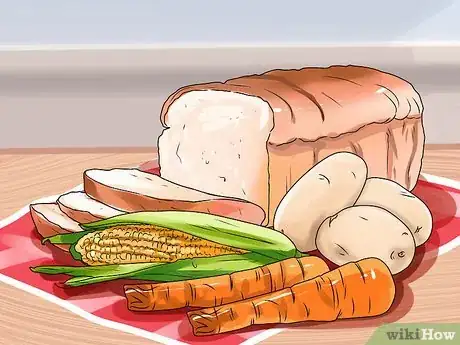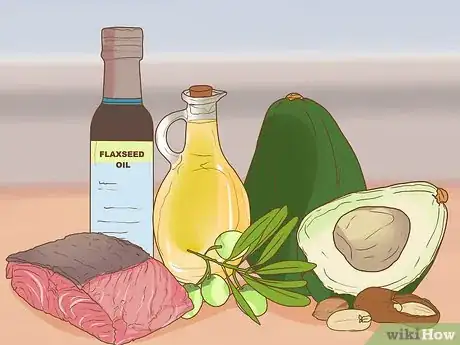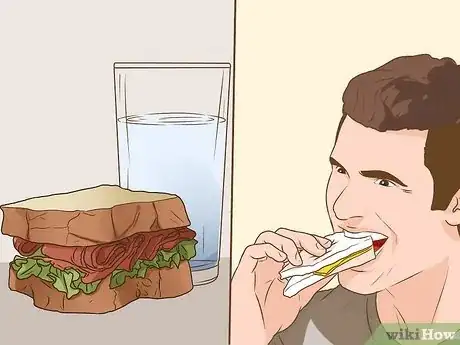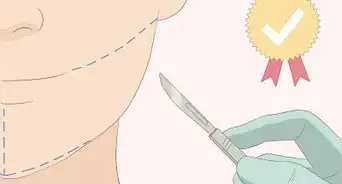This article was medically reviewed by Sarah Gehrke, RN, MS. Sarah Gehrke is a Registered Nurse and Licensed Massage Therapist in Texas. Sarah has over 10 years of experience teaching and practicing phlebotomy and intravenous (IV) therapy using physical, psychological, and emotional support. She received her Massage Therapist License from the Amarillo Massage Therapy Institute in 2008 and a M.S. in Nursing from the University of Phoenix in 2013.
There are 8 references cited in this article, which can be found at the bottom of the page.
This article has been viewed 55,901 times.
Ketosis is the process in which, due to a lack of carbohydrate intake, your body breaks down previously stored fat to meet your energy needs.[1] Though there can be dangers involved with ketosis, including dehydration and other side effects, many people look to limiting carb intake as a way of losing weight and improving metabolic function. Safely staying in ketosis, though, involves much more than just limiting carbohydrate intake. Ultimately, by exercising and eating right, fasting, and consulting professionals to make sure you stay healthy, you’ll be more equipped to safely stay in ketosis.
Steps
Eating and Exercising
-
1Lower your carb intake. The most popular way for people to maintain ketosis is to limit their carb consumption to between 20-50 grams per day. The total amount, though, depends on your gender, weight, and age. Avoid:[2]
- High carb vegetables like peas and squash. Instead, focus on spinach and Brussel sprouts.
- Bread
- Starchy food like corn and potatoes
- Grains like wheat, rice, and oats
-
2Eat more healthy fats. Healthy fats are perhaps the most important element of a ketosis diet. Without consuming enough healthy fats, you won’t be able to maintain ketosis. As a result, you’ll need to eat enough fats and bring healthy fatty foods with you to places you can’t get them. Focus on:
- Meat like beef, chicken, seafood, and even bacon
- High fat vegetables like avocados
- Full-fat dairy products like cheese, butter, and heavy cream
- Eggs
- Nuts and legumes
- Products that contain coconut oil
Advertisement -
3Create a regular exercise schedule. While the foods you eat will help you stay in ketosis, you also need to exercise regularly. This is because you want your body to be active so you can burn any carbs you consume.
- Do light exercise, like walking or running, if you consume more than 5 or 10 grams of carbs.
- Exercise at least 3 times a week for half an hour or more. For example, set aside time on Monday, Wednesday, and Friday to exercise.
- It is best if you do at least some sort of moderate exercise every day. Running or powerwalking for half an hour a day will do a lot to help you stay in ketosis.
- Exercise is important because it will help you burn off any carbs you consume, thus helping your body stay in ketosis.[3]
-
4Exercise more when you consume carbs. If you wind up eating extra carbs on a given day (more than 5 or 10 grams), you’ll need to exercise more than normal extra to burn them off. This way, you'll burn off any carbs that could prevent your body from entering or staying in ketosis.
- Consider only eating carb heavy meals before a workout.[4]
-
5Investigate the risks of ketosis before you change your diet. A ketogenic diet has been linked to several possible health problems. These problems include dehydration, blood flow problems, nausea, headache, and blood chemical imbalances. As a result, you should know common risk factors before committing to a ketogenic diet.[5]
Fasting
-
1Begin with a fast. You may need to kick your ketosis off with a short-term fast. Fasting will help purge your body of carbs. Your initial fast could be anywhere from half a day to a day or even more. The length of the fast depends on your preference and health.
- Consult your doctor before fasting. Avoid fasting if you have metabolic disorders or conditions like diabetes.
-
2Practice intermittent fasting. Incorporate a fast into your daily schedule in order to give your body a chance to process any carbs you may consume and to begin to break down stored fat.https://www.wholesomeyum.com/intermittent-fasting//</ref>
- Skip a meal or stretch times between your meals. For example, skip breakfast every day.
- Try to fit all your eating into 8 hours of the day.[6]
-
3Start a fat fast. A fat fast is when you eat only a small number of high fat calories on a given day. Ultimately, you’ll lower caloric intake but maintain a high fat diet, spurring ketosis, and forcing your body to break down stored fat to meet your energy needs.
- Consider eating about 1,000 calories per day of which 90% come from fat. An example of this would be eating several cuts of beef in one today paired with green beans, spinach, broccoli.
- Your total number of calories may vary based on age, gender, and weight.[7]
-
4Use calorie counting as a tool. If you don't want to calorie count every day, take a week or two to establish your calorie intake for a few weeks and get a baseline. After that, use rough estimates to gauge what you should and shouldn't be eating. Adjust your calorie intake based on your metabolism and activity levels.[8]
Consulting Professionals
-
1Talk to your physician. Because ketosis is a result of your body’s ability to process and use glycogen, you should consult your doctor before beginning a regimen intended to keep you in ketosis. This is important, as your doctor might have insight into the safety of a ketosis diet for you.
- Inform your doctor about any outstanding medical issues you have
- Your doctor may warn you about the side effects of ketosis, such as nausea, headache, fatigue, dehydration and associated vascular damage.[9]
-
2Test your blood. Whether your physician recommends it or not, you should probably have your blood tested for certain levels if you are committed to staying in ketosis. By testing your blood, you’ll make sure that you are healthy, your liver and kidneys are functioning well, and that there are no serious side effects to ketosis. Test your:
- Ketone levels – this includes acetone, beta hydroxybutyrate and acetoacetate
- Blood sugar
- Protein levels
-
3Use a ketone meter. You can purchase a blood ketone meter for between $25-$30 plus the cost of ketone strips, which are about $4 each. Measure your blood ketone levels every day, or measure more infrequently to make sure you're on track.[10]
- Your optimal ketosis should be between 1.5-3.0 mmol/L.
-
4Speak with a fitness trainer. Since exercise is an important part of your body’s ability to reach and maintain ketosis, a weight trainer will be able to provide you with a plan that will help you meet your fitness goals and stay safely in ketosis.
- A fitness trainer may recommend a cardio routine that includes running or swimming.
- Depending on your goals, your weight trainer may suggest a light weight training routine that will help you turn the extra protein you consume into muscle.
-
5Consult a dietitian or nutritionist. A dietitian or nutritionist will be able to consider your age, weight, height, and other factors. They’ll use this information to create a nutritional plan geared toward helping you stay in ketosis. They’ll take vital statistics such as your weight, age, and health conditions.[11]
References
- ↑ https://www.ncbi.nlm.nih.gov/books/NBK209323/
- ↑ https://www.perfectketo.com/how-to-maintain-ketosis/
- ↑ https://www.perfectketo.com/how-to-exercise-in-ketosis/
- ↑ https://www.perfectketo.com/how-to-exercise-in-ketosis/
- ↑ https://www.ncbi.nlm.nih.gov/pubmed/16037240
- ↑ https://www.wholesomeyum.com/intermittent-fasting/
- ↑ https://www.ruled.me/counting-calories-on-ketogenic-diet/
- ↑ https://www.ruled.me/counting-calories-on-ketogenic-diet/
- ↑ https://www.ncbi.nlm.nih.gov/pubmed/16037240







































































Medical Disclaimer
The content of this article is not intended to be a substitute for professional medical advice, examination, diagnosis, or treatment. You should always contact your doctor or other qualified healthcare professional before starting, changing, or stopping any kind of health treatment.
Read More...